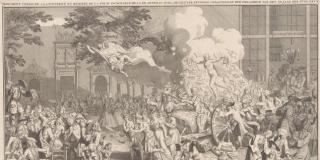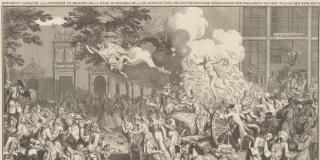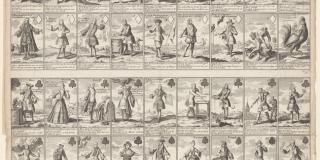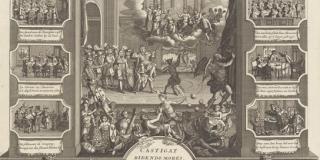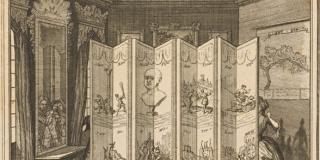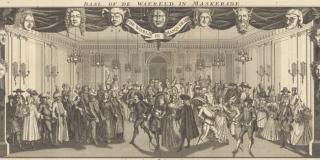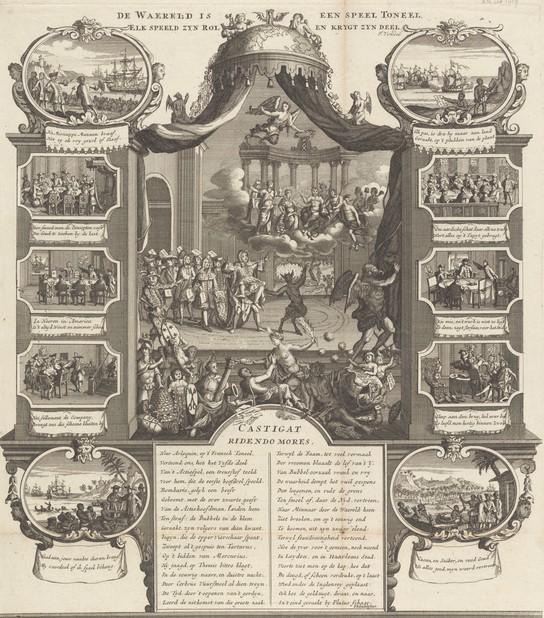
Anonymous, after Joost van den Vondel (1587–1679) and Gysbert Tysens (1693–1732), The World is a Stage; Everyone Acts His Part and Gets His Share, 1720, Etching and engraving, Miriam and Ira D. Wallach Division of Art, Prints, and Photographs
Staging Folly
The Great Mirror of Folly associates the dubious ventures of the South Sea and Mississippi Companies with the sorts of dazzling but deceptive illusions that were central to theater craft. An exercise in trickery, the financial crisis not only encouraged witnesses to believe in a fantasy, but also blurred the divide between actor and audience, coercing even innocent bystanders to assume roles in one of the most dramatic busts in history.
The sensibility has roots in the work of William Shakespeare, who famously compared life to a theatrical performance in which the individual assumes an assigned identity. “All the world’s a stage,/And all the men and women merely players,” a character in As You Like It famously states. The Great Mirror of Folly gives new meaning to Shakespeare’s claim, conveying a sense of the parts foisted on those who embraced John Law’s false promises of endless wealth.
Figures of tragedy for incarnating personal ruin, The Great Mirror of Folly’s investors and dupes are also the butt of laughter for engaging in schemes that are the stuff of comedy. Forced to repeat lines they are powerless to alter, the men and women who were caught in the bubbles are pressed into personas that compel them to replay never-ending tales of woe.
